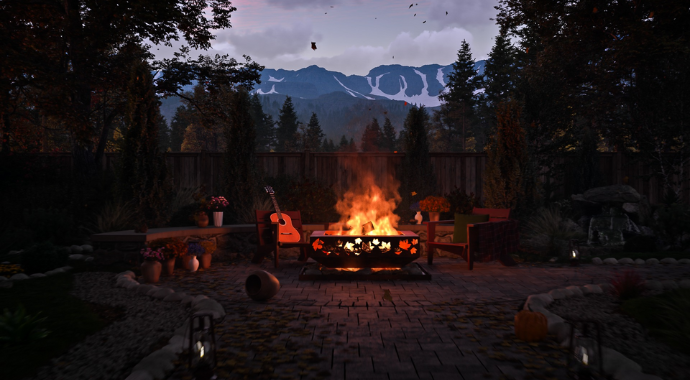AsymmetricA recently worked on the Dachong development, producing day and night versions of the shot, and they spoke with us about how they created those complimentary images – be sure to open the larger versions of the images to see the extraordinary level of detail!
Continue reading for a look behind the Dachong development project…
Hello to all fellow visualisers! First of all we would like to thank the Corona team for inviting us to do this feature.
The Dachong development was one of the largest projects we have worked on using Corona. It designed by Foster+Partners (F+P) for a Chinese development group, and we were commissioned to produce a series of visuals. In this article, we will present a day and a night aerial shot for the overall development, and we will talk about the technical aspects and how Corona Renderer handled the challenges.

We employed as much 3D as possible, so the entire terrain including the far distance is all 3D modeled, as well as all the trees which were of course proxied. For the distance we used Corona Scatter with a density map derived from the satellite imagery. The greenery around the towers and on the terraces had to be manicured by hand for which we usually use combination of the 3ds Max built in object painter with manual placement.

In the end it was a bit of a challenge for both us and Corona. Even the 3D models of the main buildings provided by F+P were very detailed, with tens of thousands of instanced elements. Combined with a few more hundreds-of-millions of polygons for the surroundings, we ended up close to a billion polygons.


Previously, we had done a few very successful day and night sets, and here F+P asked us to produce both a day and night option for each view, which we really like because evening/night mood is fun to create with a good HDRI, and since you can use the basic bitmap loader, it’s also very intuitive.
The rest is about lights and light materials. We employ splines with different light materials a lot – invisible directly and sometimes invisible in reflections too , just for the direct illumination (such as on roads) and for the architectural lighting. The interiors were faked with just a simple facade texture with illumination.


There has been some Photoshop post-production included as usual – mainly colour-corrections, grading up certain areas, sky, and a bit of haze/diffused light enhancements.
All images by AsymmetricA for Foster + Partners
http://asymmetrica.co.uk/





